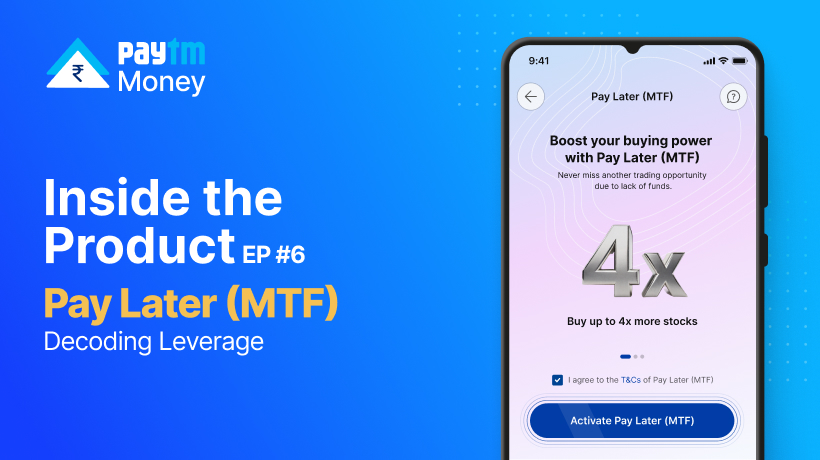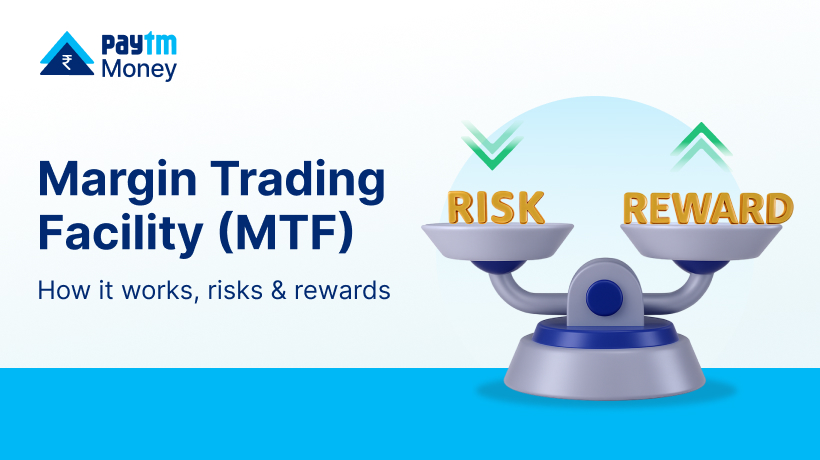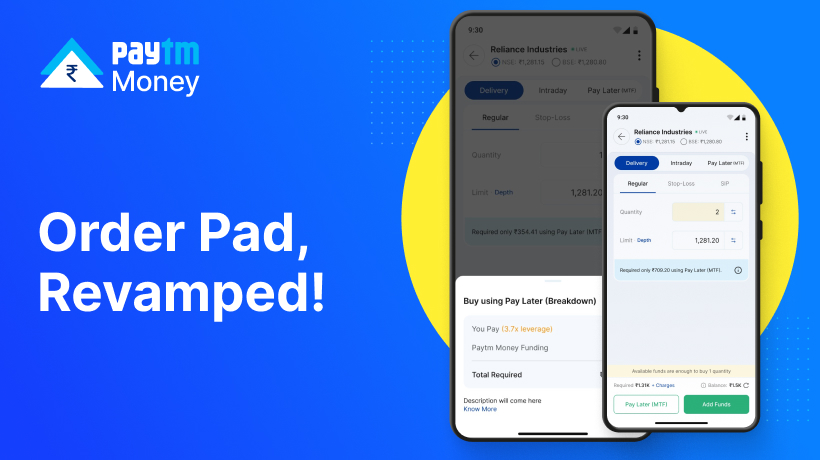Types of Stock Orders5 min read
When you decide to buy or sell a stock you have to place an order with the broker. A stock investing and the trading platform supports different types of orders like Market Order, Limit Order, Cover Order, and Bracket Order.
When you place an order, you will have to instruct about the type of order you want to place.
Let’s look at the various types of stock orders.
Market order
A market order is the most common type of order placed in the stock markets. It is executed at the best available price in the market which means that the order is executed at the lowest price at that moment.
However, there can be a slight difference in the price you see on the app and the price at which the order is executed. This is because the price on the screen is one at which the last market transaction happened.
Stop Loss Market Order
Stop-loss is an advance order used by traders and investors to sell a stock when it reaches a particular price point. It is used to limit losses or gains in a trade. By executing a stop loss market order traders and investors can automate the selling of a particular security when it reaches a pre-set price limit. However, once the set price level is breached it becomes a market order and the sell or buy price can differ as per the market fluctuations like any other market order.
In a stop-loss market order investors can shrug off the pressure of monitoring a stock on a day-to-day basis. The trade gets triggered automatically when it reaches the prescribed limit, such orders can be very helpful for retail investors.
Limit order
Instruction to trade at the best price currently available in the market, but only if it is equal to or better than the limit price of the order.
For buy orders: Limit Price < Current Market price, Trade price <= Limit price
For sell orders, Limit Price > Current Market price, Trade price >= Limit price
Stop Loss Limit Order
The stop-loss limit order is an advanced version of the stop-loss market order wherein a trader or an investor can overcome the uncertainty attached to the stop-loss market order which is not knowing at what price the order will be executed at.
The stop-limit order gives the investor an opportunity to specify the limit price i.e. the maximum price at which the buy order should be executed and the minimum price at which the sell order should be triggered. Hence, the stop loss limit buy order is triggered as soon as the stock price reaches the desired limit and an attempt to buy is made at the limit price or lower. Similarly, the stop-loss limit sell order is activated as soon as the stock price reaches the limit and then an attempt to sell is made at the desired limit or higher.
Cover Order
Cover order is an advance intraday order accompanied by a compulsory Stop Loss Order. This helps traders minimize their losses by safeguarding themselves from unexpected market movements.
Cover order offers high leverage and is available in Equity Cash and Equity F&O segment. It has 2 orders in itself – Limit or Market Order and Stop Loss Order. These orders can be Buy Long or Sell Short orders.
One of the benefits of a cover order is that a trader can place an order with a stop loss and can hedge the risk of losing a substantial portion of the capital. Also, the compulsory Stop Loss feature reduces risk to a great extent, the leverage offered on Cover Orders is much higher when compared to naked intraday orders.
Bracket Order
Bracket order is another type of order that you can place in intraday trading. Such an order combines a buy order with a stop-loss and a target order.
This means that along with the initial order, there will be two opposite side orders placed as well. Bracket orders can be placed during buying or selling shares.
In case the initial order is a buy order, then both the target and stop-loss orders will be sell orders. Similarly, when the initial order is a sell order, the other two orders will be a buy order.
For instance, an investor places a limit order to buy a stock of a company at Rs 1,000 per share. This is placed along with a stop-loss at Rs 970 per share and a target order at Rs 1,030 per share.
Here we can see that the investor’s main position of Rs 1,000 is bracketed by a higher-priced and lower-priced limit order.
Bracket orders help stock market traders to square off a favorable position by the end of the trading session.
Bracket orders may help intraday traders to curtail some risks because of the way bracket orders work. It will either help traders to book a profitable position with the target order in place or help to curtail losses to some extent with the stop-loss order in place.
Conclusion
Understanding various kinds of orders and their characteristics can give you a fair idea of how the market ecosystem works and what kind of order is suitable for you. Investors can opt for Market Order, Cover Order, and Bracket Order while trading or investing.
Disclaimer – ‘This content is purely for information and investor awareness purpose only and in no way an advice or recommendation. You should independently research and verify the information you find on our website/application. Investment in securities market are subject to market risks, read all the related documents carefully before investing. Paytm Money Ltd SEBI Reg No. Broking – INZ000240532. NSE (90165), BSE(6707) Regd Office: 136, 1st Floor, Devika Tower, Nehru Place, Delhi – 110019.’




